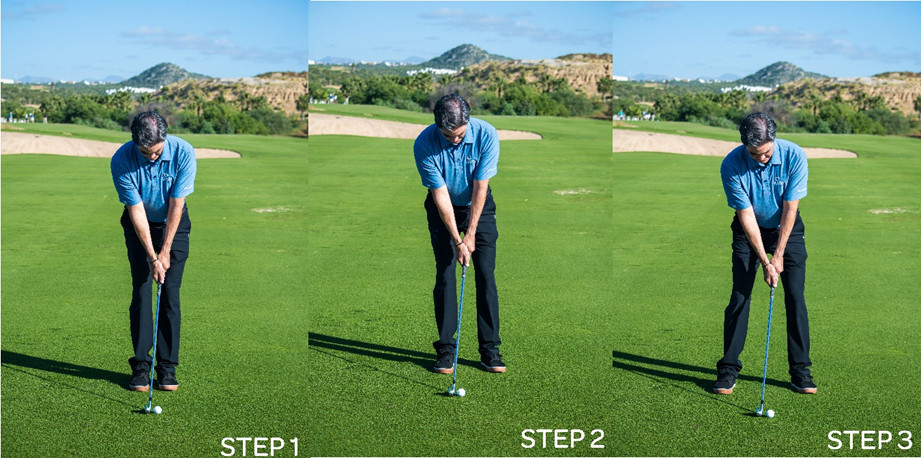
Full Swing Golf Tip
Antonio Reynante, director of golf at Quivira Golf Club, is a practical man. He does not believe that golf needs to be more complicated than it already is. He stresses bedrock fundamentals, not passing fads. His take on golf instruction removes a lot of the mystery and muddle surrounding the proper execution of the full golf swing.
In this first of four instructional lessons, Reynante demonstrates correct ball position, a prerequisite for solid, consistent contact.
Full Swing: Ball Position
For struggling amateurs, ball position is probably the most overlooked full swing fundamental. It’s common for players to think a complicated explanation is required to fix bad shots. More often than not, lingering problems just need a simple adjustment in the pre-swing to yield better results. And ball position is a BIG ONE.
A ball positioned too far forward or too far back will ruin your chances of making solid contact. The best starting point is the middle of your stance.
Next time you’re not hitting your irons solid, or you’re hitting solid shots that are pulled or pushed offline, refer to this simple but effective tip.

Step 1. Address golf ball with a 7 iron and feet centered together.
Step 2. From this point, make a little sidestep so that left foot is aligned with left hip. This position is the same for every ground shot.
Step 3. Take a step sideways in the opposite direction with the back foot. The trail foot separates wider as the club gets longer.

This set-up ensures two things: the stance is parallel to the target line; and the ball is correctly positioned for solid contact. Use the logo on the left side of your shirt as a guideline. Remember, you don’t have to be perfect, but the ball should be forward of the middle.
From this position, make a ¾ swing, allowing your body to turn left as you perform your follow-through. This is important: you want to trap the ball against the turf without any conscious effort of the hands and arms. Use the turning action of your hips and upper body in unison to release the club.

Finally, the key is to match the left turning action of the body with a high finish of the arms. This coordinated movement will prevent you from making a cut-across motion—and enable you to execute a powerful rotational follow-through.
Done correctly, proper ball position will yield a consistent pattern of solid shots you can rely on round after round.